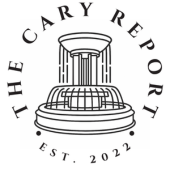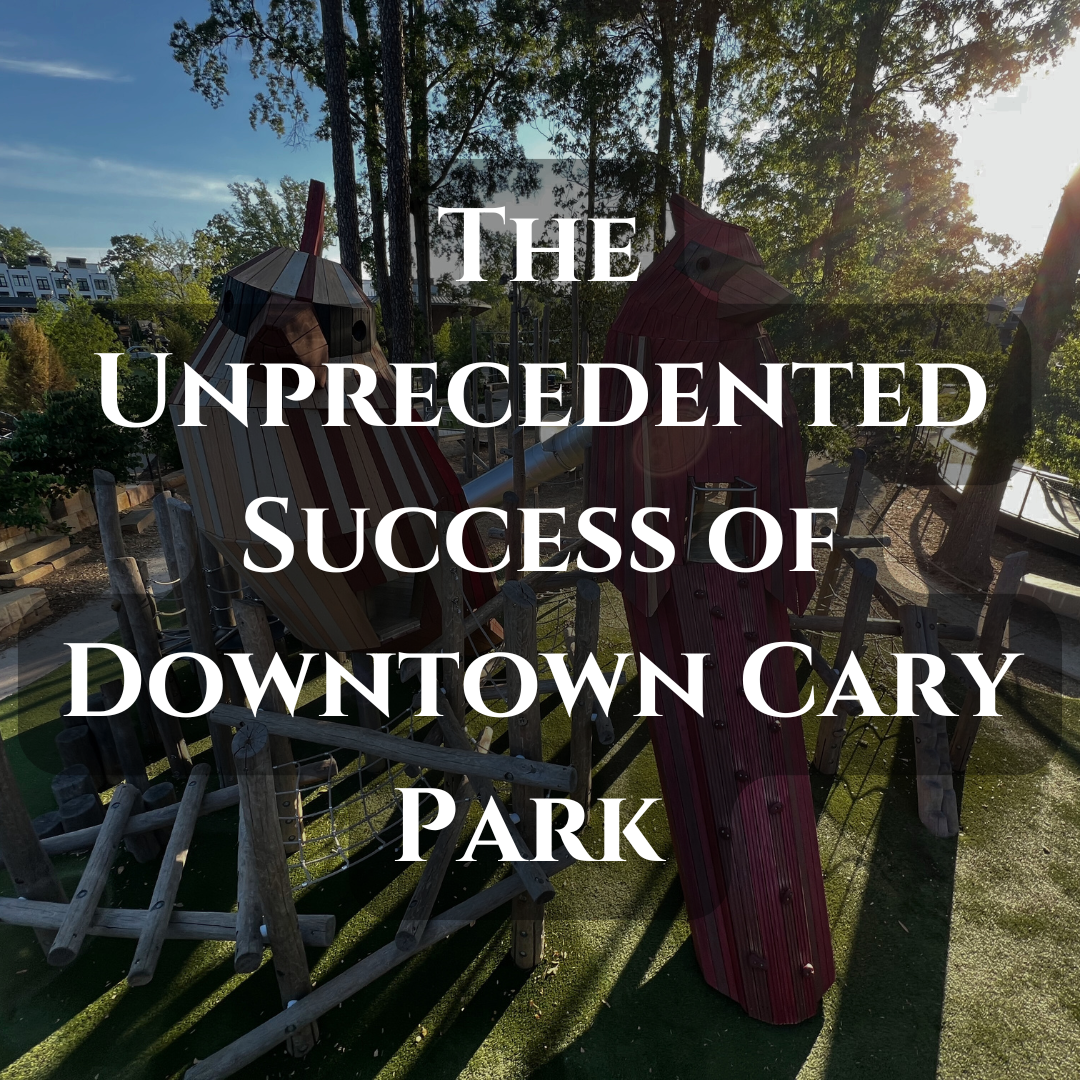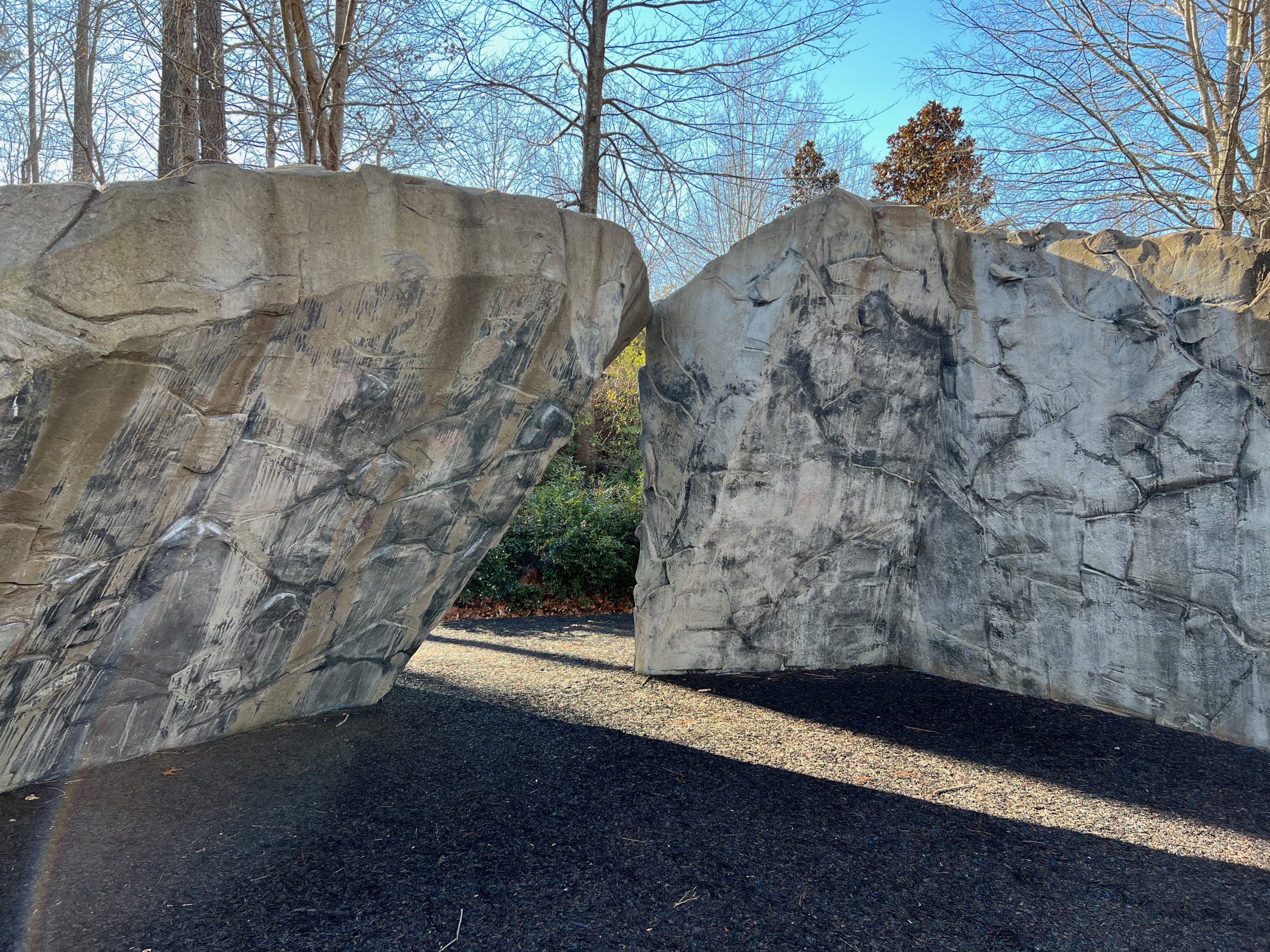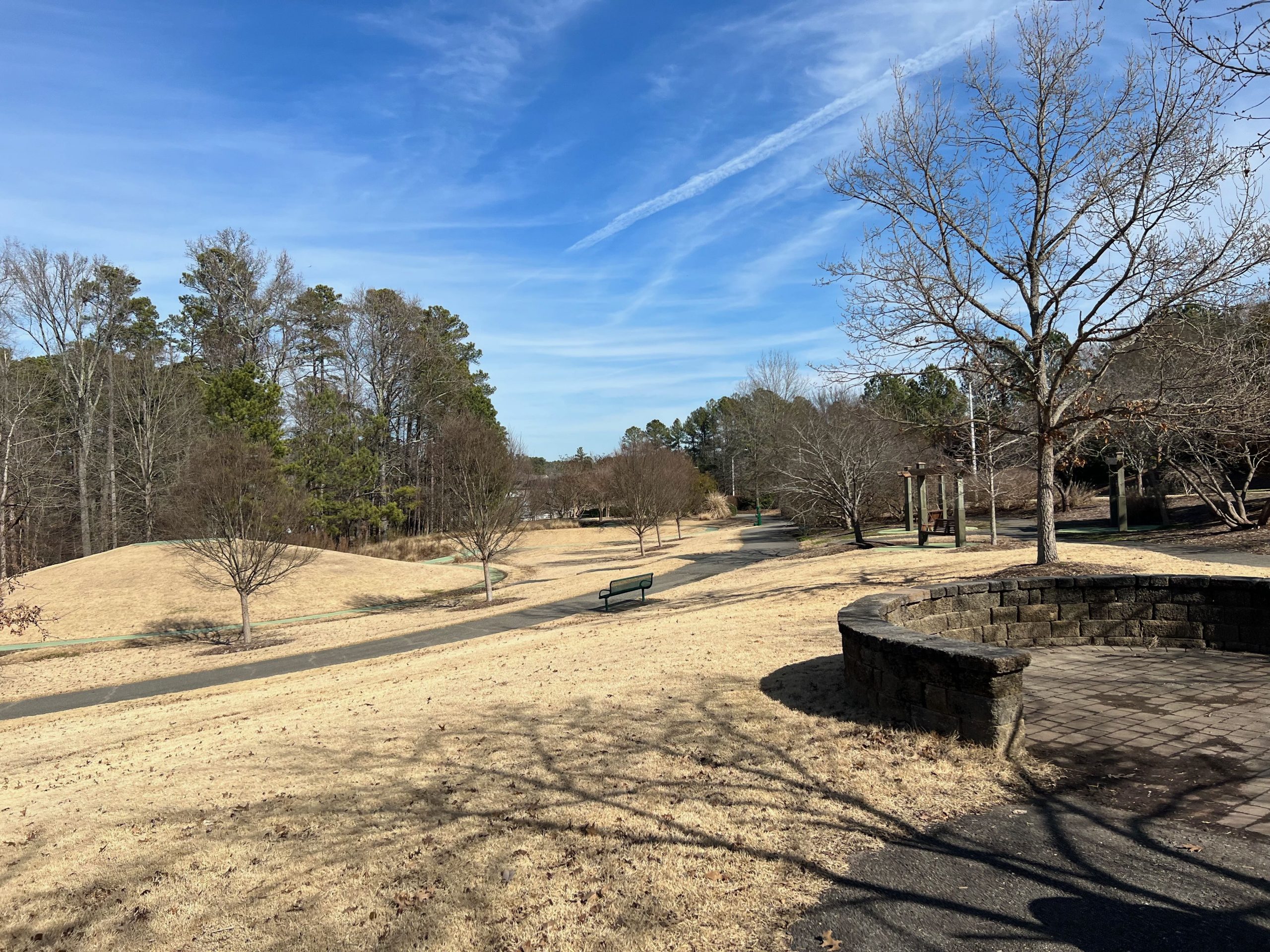The Unprecedented Success of the Downtown Cary Park
On November 19, 2023, Downtown Cary Park officially opened to the public with a ribbon cutting ceremony that drew thousands of residents eager to see the town’s newest centerpiece. Just days earlier, during a Cary Town Council session, Town Manager Sean Stegall held up the first brace removed from the fencing, announcing that the barriers surrounding the park were finally coming down. After years of anticipation, Downtown Cary Park was no longer a concept on blueprints.
Two Decades in the Making
The story of Downtown Cary Park stretches back much further than its opening day. The idea of creating a central park in the heart of downtown first surfaced in 2001. At the time, Cary was already known for suburban neighborhoods, well-kept greenways, and smaller community parks, but staff desired a gathering space that could anchor downtown and serve as a unifying point for future growth.
The idea moved slowly. It was not until 2019 that the final design for the park was approved, setting construction in motion. That meant more than twenty years passed between the first discussions of a central park and its grand opening.
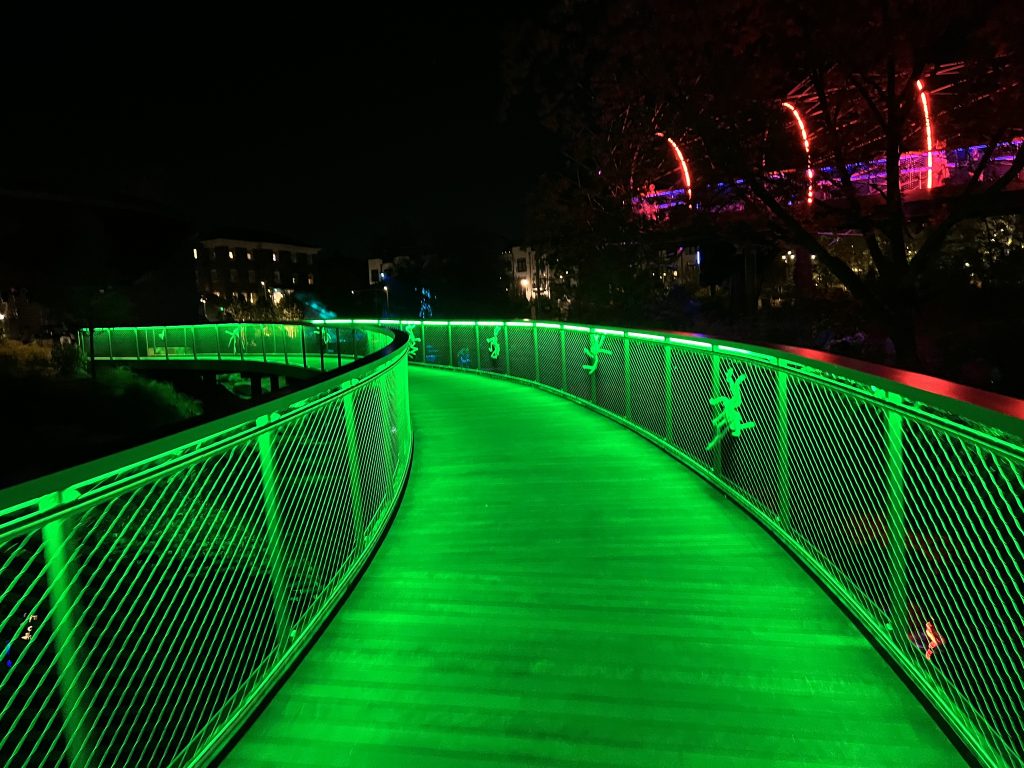
The Price of Progress
Downtown Cary Park is one of the most ambitious public projects in the town’s history. The construction cost totaled $68.9 million and the annual operating budget stands at $6 million. These numbers have made the park a frequent subject of debate.
The park’s opening happened to coincide with a property tax increase, which many residents linked to the project. Town officials noted that the tax hike was not specifically tied to the park, but the timing made the connection difficult to separate in the public’s mind. Some saw the park as an investment in Cary’s future, one that would draw tourism, raise property values, and enhance quality of life. Others viewed it as a costly example of overspending at a time when household budgets were already strained due to high post-pandemic inflation.
Regardless of perspective, the park has become a touchstone in broader conversations about how Cary should balance fiscal responsibility with investments that shape community identity.
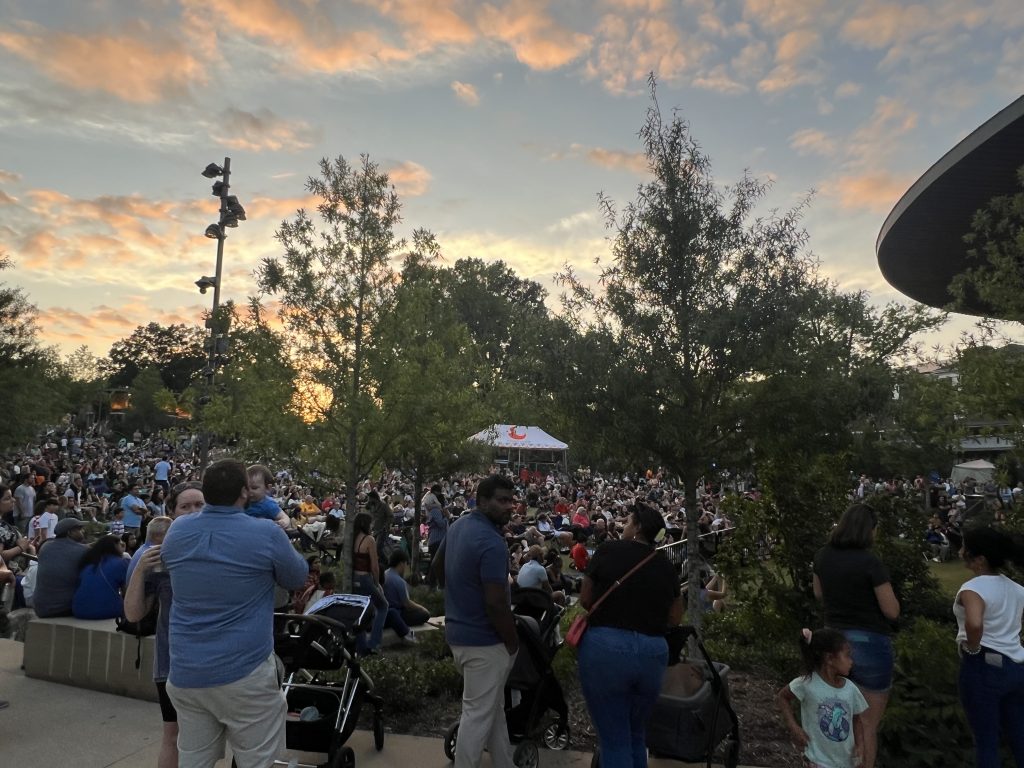
Early Challenges
The opening months of Downtown Cary Park were not without problems. Sections of the grounds had to be roped off for repairs. The splash pads, one of the most anticipated features for families, remained out of service for much of the first summer. The Gathering House, a structure meant to serve as a flexible indoor space, has yet to open nearly two years after the ribbon cutting CORRECTION (09/07/2025): The Gathering House recently re-opened for rentals but the website wasn’t updated. It has now been fixed. More recently, the botanical garden was closed for several months to address drainage issues.
While these issues frustrated some, they did not derail the park’s momentum. Residents continued to show up in large numbers, and attendance figures reflected that enthusiasm.
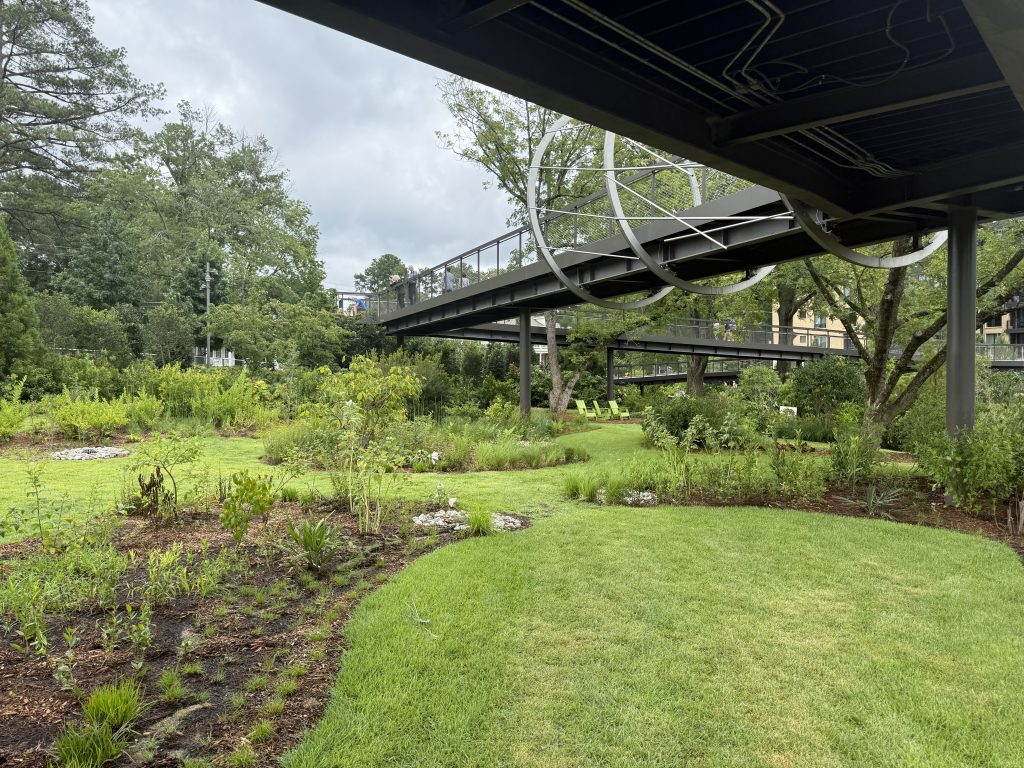
A Community Magnet
Downtown Cary Park quickly became one of the most visited places in town. More than 750,000 people passed through its gates in the first year. This is a remarkable figure for a community the size of Cary and a clear indication that the park succeeded in its goal of drawing people downtown.
The Nest, a sprawling children’s play area, received national attention when it was ranked as the number one public playground in the United States by USA Today. The park’s lawns hosted everything from yoga classes to outdoor movies. Trivia nights at the Bark Bar and regular cultural events gave downtown a new rhythm, one built around shared experience and civic life.

More Than a Park
Downtown Cary Park redefined the idea of livability in Cary.
The park attracts workers who bring laptops and take advantage of the surprisingly fast WiFi. It draws families to the dog park and playgrounds. It offers coffee stands, table tennis, foosball, and open lawns that invite casual gatherings. In doing so, it has created a sense of place that cannot easily be replicated.
What makes the park special is not simply its programming but its everyday role. It has become the place to meet a friend, walk a dog, or spend an hour outside between errands. Cary has more than thirty parks, many of which emphasize natural settings, trails, and quiet spaces. Downtown Cary Park is different. It is designed as an urban environment that prioritizes people and community interaction.
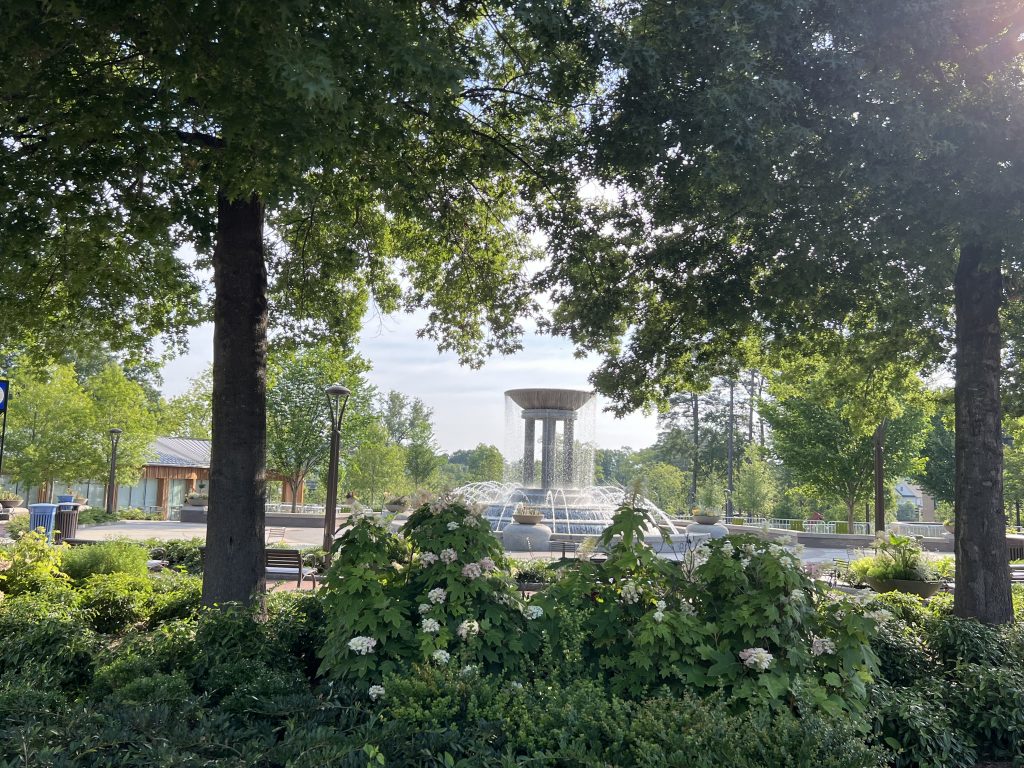
Economic and Civic Impact
Large civic projects often spark debate about their economic value, and Downtown Cary Park is no different. Advocates argue that the park increases foot traffic to downtown businesses, strengthens the town’s identity, and enhances property values in surrounding neighborhoods. The influx of visitors creates opportunities for nearby restaurants, coffee shops, and breweries. The park also provides a venue for events that attract both residents and out-of-town guests, further integrating it into Cary’s economic fabric.
Still, critics often cite the increased traffic, lack of parking, and larger crowds as a downside to livability. The entire feel of downtown shifted after the park has opened as it went from a relatively quiet (but charming) space to something that is much more bustling with energy.
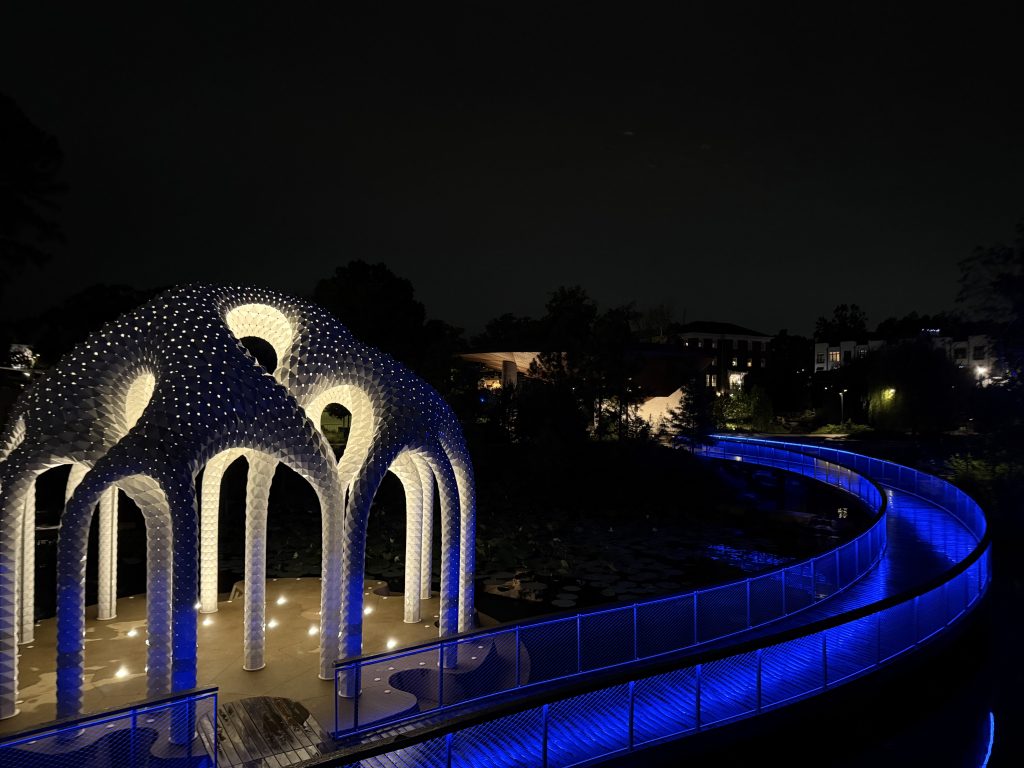
Looking Ahead
The park is still young, and its long-term trajectory is not yet known. Questions remain about ongoing maintenance costs and how well the park can handle heavy usage over time. Future town councils will likely revisit its budget needs, especially if revenue pressures increase.
What is already clear, however, is that Downtown Cary Park has shifted the town’s cultural and social landscape. It has transformed downtown into more than a corridor of shops and restaurants. It is now a true “third space” that many towns and cities lack.
Two decades after it was first imagined, Downtown Cary Park stands as a success story. It is expensive, imperfect, and occasionally frustrating, but it is also beloved. It has given Cary not only a new public space but also a central gathering place that reflects the town’s ambition and character.
